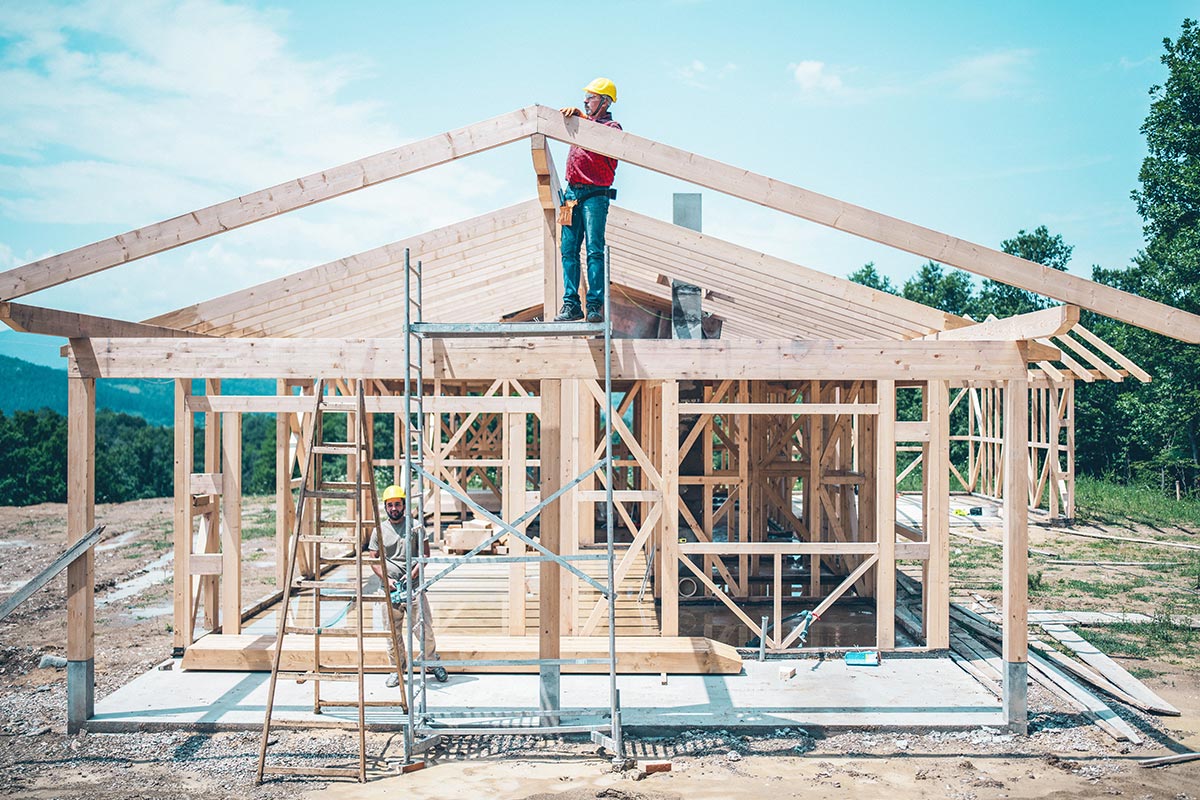
A Beginner's Guide to Residential Construction Loans
Purchasing a new home can be a frustrating process. First, you have to sift through all the properties currently on the market and narrow down the choices based on your preferences for location, price, style and features. When you finally find one that checks most of your boxes, you have to get through the offer process and then, when your offer has been accepted, the mortgage process.
Whew!
Another option is to build your own home. You’ll still have to go through a journey to get to your dream home but, unlike when you purchase an existing home, a custom home gives you the thrilling opportunity to add the features you want into the design.
That’s not the only way the new construction process differs from purchasing an existing property. The loans are completely different as well.
What is a construction loan?
If you plan to hire your own general building contractor, you’ll need more specialized financing options. A construction loan is simply a short-term loan—usually from 12 to 18 months—that manages and disperses the costs of custom home building.
A construction loan may cover the following costs:
-
Architectural plans
-
Permits
-
Labor
-
Materials
-
Contingency funds (if your project goes over budget)
How do construction loans work?
Since there isn’t an existing home to secure the loan with, like a traditional mortgage, the application and approval process is a bit more complex. Your lender will likely require a review of your project plans, description of materials, estimated construction timeline and budget as well as your own financial situation.
Another key difference between construction loans and traditional mortgages is that, instead of paying out in a lump sum, construction loans function as a line of credit. Based on the relationship between the lender and the builder, the lender may make payments directly (to subs and suppliers, or to the builder), in installments, as various stages of the project are completed. Prior to each payment, your lender may request an independent evaluation of the progress by an inspector.
Kim Moore, assistant vice president of mortgage sales for Mountain America Credit Union says, “During the building, most construction loans require you only to pay the interest on funds as they are paid out. Once the project has been completed, the loan will either convert into a permanent mortgage or you’ll need to qualify for a new mortgage to pay off the construction loan.”
Types of construction loans
There are a lot of ways to build a new home. You may choose to gut an existing home and keep the “bones” to rebuild or start from scratch on an empty plot of land. Whether you choose one of these options—or something in between—there’s a construction loan that will work for you.
Since construction loans vary by lender, be sure to shop around to find the best option for your situation. Here are some of the most common types of construction loans:
Construction-only loan—Considered a higher-risk loan, this short-term, fixed or adjustable-rate loan is used to pay for construction costs. Once the project is complete, the loan must either be paid in full or refinanced into a mortgage. If you choose this loan type, be aware that you’ll need to have two separate application processes and two separate closings. This is a good choice for borrowers who have a stash of cash on hand or who plan to pay off the construction loan with the sale of their previous home.
Construction-to-permanent loan—These loans also are short-term loans that cover the construction costs—but they convert automatically to a permanent fixed- or adjustable-rate traditional mortgage once the home is completed. During construction, you’ll pay interest-only payments. This is great for borrowers who want to save on closing costs and lock in mortgage financing.
Renovation loan—Similar to a regular mortgage, renovation loans are insured by the Federal Housing Administration (FHA) and cover both the purchase of a home and the construction costs. They are sometimes referred to as 203(k) loans. Homeowners who are buying a fixer-upper intending to make extensive renovations would typically choose this type of loan. An added bonus? Even though they are purchasing AND renovating, borrowers only have to make one loan payment.
Other options to finance a renovation are available that don’t fall under construction-specific loans. Moore advises, “There are also home equity, line of credit and refinance options for those homeowners who have built up equity in their home.”
Owner-builder loan—If you’ve decided to act as your own general contractor, this could be a good loan option for you. Keep in mind, you’ll likely have to prove that you’re qualified to oversee the construction project by proving that you have the education, experience and proper licensing.
Long-term loan—Once construction is complete and the final inspection has occurred, you can apply for a long-term loan—essentially a traditional mortgage. If your construction loan isn’t set up to convert to a traditional mortgage, this may be something that will work for you.
Construction loan requirements
As we mentioned earlier, the process to get a construction loan can be more rigorous than for a traditional mortgage. The risk on the part of the lender is greater due to the shorter-term and the fact that there is no home yet to secure the loan. More risk means more requirements.
Here are some things your credit union or bank will consider during the approval process:
-
Credit score—Typically, a good to excellent credit score is required to secure a construction loan—680 or higher. Of course, some lenders could require something higher—possibly 720 or better. If you are considering a construction loan and your credit score is not quite up to these levels, take steps to improve it before applying. You can review your credit report for free once per year from each of the three main credit bureaus.
-
Income—Your lender will want to make sure you have enough income to pay the construction loan payments as well as all of your other financial obligations. They will require documentation proving your annual income.
-
Debt-to-income ratio (DTI)—This is a comparison of all your monthly debt payments to your gross monthly income. The lower your DTI, the more available cash you have to pay the loan—theoretically. Shoot for a DTI of 45% or less.
-
Down payment—Lenders usually require a minimum down payment of 20%. However, some may require more. It’s possible you may be able to put down less than 20%, but this will typically result in private mortgage insurance (PMI) being added to your payment. Be sure to compare all the details when shopping around.
-
Budget and plans—The more detail you provide to your lender, the better your chances of being approved—as long as everything is in order. In addition to a detailed budget for the project and complete architectural plans, your lender may also request the deed or purchase contract for the land you’ll be building on, a payment schedule, builder or contractor qualifications (license, insurance certificate, proof of experience) and a signed construction contract.
How are leftover funds handled?
Once the construction is complete and all payments have been made, you may be asking what happens to any leftover funds from the construction loan? Can the funds be used for interior design services or home furnishings?
Unfortunately, no. This money is for construction costs only. You could use it for upgrades—say when construction was finished, you realized you wanted a larger window in your master bathroom. In most cases, however, leftover money will just be applied back to the principal and the borrower will only pay interest on the money borrowed.
Navigating the world of new construction can seem overwhelming. Mountain America Credit Union can help you decide which type of construction loan will best fit your situation, and we also offer low rates and fantastic service. Contact us today to get started on building your dream!
Related Articles


